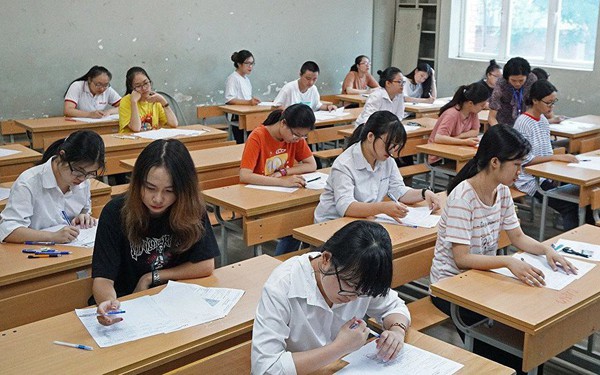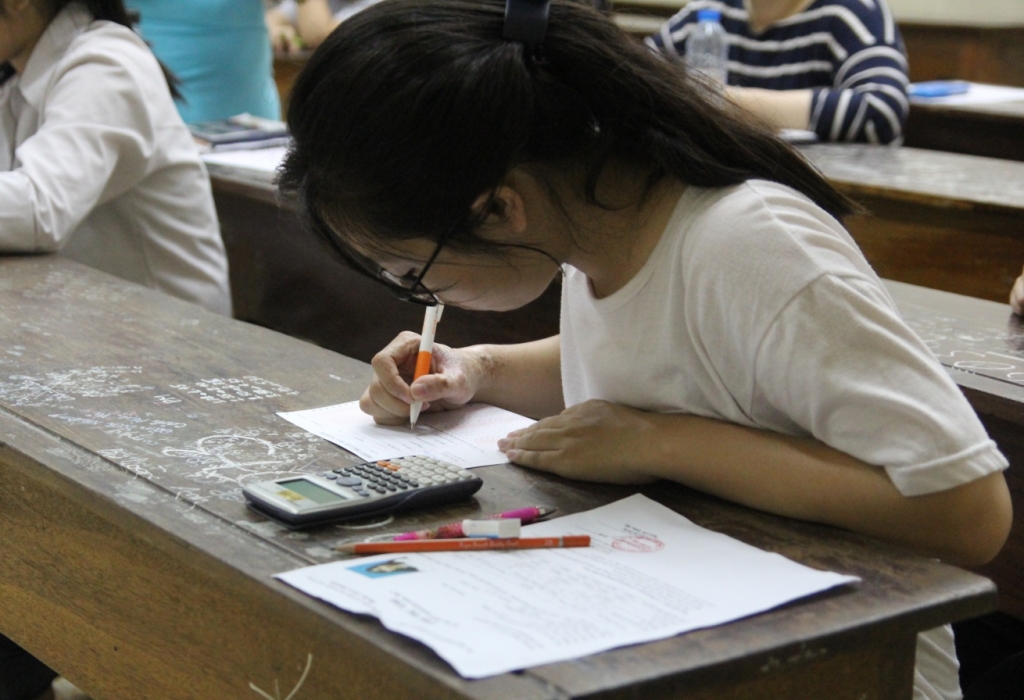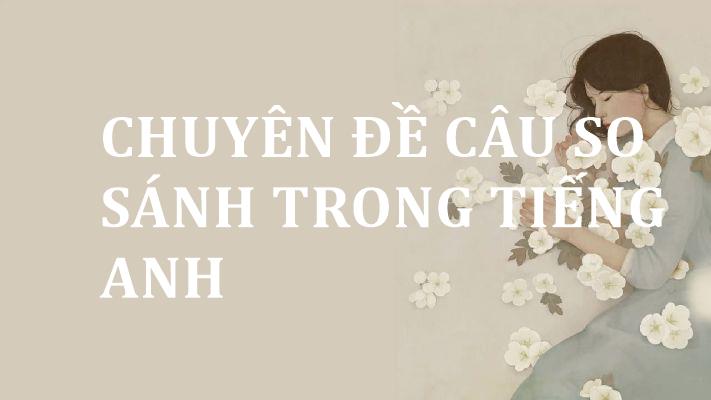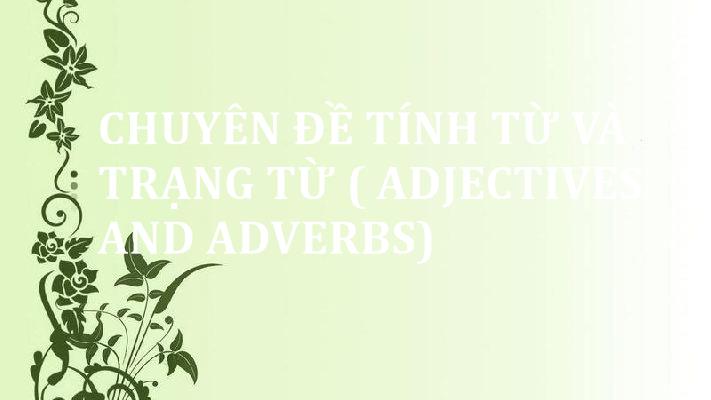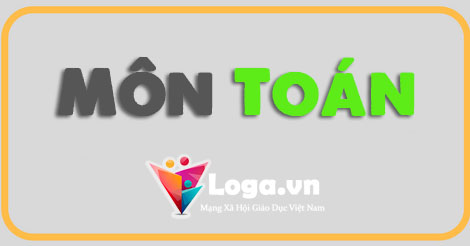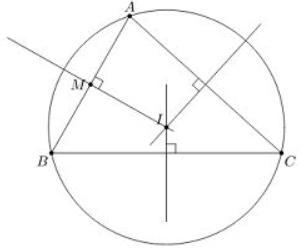PHẦN I. LÝ THUYẾT
A. RELATIVE CLAUSES - Mệnh đề quan hệ là mệnh đề phụ được nối với mệnh đề chình bởi các đại từ quan hệ (who, whom,
whose, which, that) hay các trạng từ quan hệ như (where, when, why). Mệnh đề quan hệ đứng ngay đằng
sau danh từ. Chức năng của nó giống như một tình từ do vậy nó còn được gọi là mệnh đề tình ngữ.
Eg: The man who lives next door is very friendly
|
Danh từ đứng trước (Antecedent) |
Chủ ngữ (Subject) |
Tân ngữ (Object) |
Sở hữu cách |
|
Người (person) |
Who/That |
Whom/That |
Whose |
|
Vật (Thing) |
Which/That |
Which/That |
Of Which/Who |
I. Đại từ quan hệ (Relative pronouns)
1. WHO: thay thế cho người, làm chủ ngữ/ tân ngữ trong MĐQH.
Ex: - I need to meet the boy. The boy is my friend‘s son.
=>I need to meet the boy who is my friend‘s son.
The girl is John‘s sister. You saw her at the concert.
=> The girl who you saw at the concert is …
2. WHOM: thay thế cho người, làm tân ngữ trong MĐQH.
Ex:- I know the girl. I spoke to this girl.
=>I know the girl whom I spoke to.
3. WHICH: - thay thế đồ vật, làm chủ ngữ /tân ngữ trong MĐQH.
Ex: - She works for a company. It makes cars
=>She works for a company which makes cars.
The accident wasn‘t very serious. Daniel saw it.
=> The accident which Daniel saw ……
* Thay thế cho cả mệnh đề đứng trước nó – a connector
Ex: He passed his exam. This pleased his parents.
He passed his exam, which pleased his parents. (dùng dấu phẩy trước đại từ quan hệ)
4. THAT: thay thế cho WHO/ WHOM/ WHICH trong MĐQH hạn định (Mđ không có dấu phẩy)
Ex: - I need to meet the boy that/ who is my friend‘s son.
- I know the girl that/ who/ whom I spoke to.
- She works for a company that/ which makes cars.
*Notes:
+ Những trường hợp thường dùng THAT:
- Sau đại từ bất định: something, anyone, nobody, …hoặc sau “ all, much, none, little... ” được dùng như
đại từ.
Ex: I‘ll tell you something that is very interesting.
All that is mine is yours. / These walls are all that are remains of the city.
- Sau các tình từ so sánh hơn nhất, các từ chỉ thứ tự: only, first, last, second, next…
Ex: - This is the most beautiful dress that I‘ve ever had.
- You are the only person that can help us.
- Trong cấu trúc: It + be + … + th t … (chính là …)
It is/was not until + time/clause + that……(mãi tới khi… . thì…)
Ex: It is my friend that wrote this sentence.
It was not until 1990 that she became a member of the team.
+ Những trường hợp không dùng THAT:
- Trong mệnh đề tình từ không hạn định.
Ex: Mr Brown, that we studied English with, is a very nice teacher. (sai)
- Sau giới từ.
Ex: The house in that I was born is for sale. (sai)
+ Bắt buộc dùng THAT:
- Sau cụm từ vừa chỉ người và vật, bắt buộc dùng “that”:
Ex: He told me the places and people that he had seen in London.
We can see the farmers and their cattle that are going to the field.
- Trong cấu trúc: It be ………. th t ………… . (có thể dùng WHO khi chủ ngữ Hoặc tân ngữ đứng giữa
“It be N / O th t …. “chỉ người
5. WHOSE (OF WHICH): thay thế cho các danh từ có tình từ sở hữu đi kèm (his-, her-, its-, their-).
Ex: - John found the cat. Its leg was broken.
=>John found a cat whose leg/(the leg of which) was broken. (Of which is informal)
- This is the student. I borrowed his book.
=>This is the student whose book I borrowed.
*Các từ chỉ số lượng như (quantifiers): All of, None of, each of, most of, many of, neither of, them jority of …=> có thể dùng với WHICH / WHOM/ WHOSE trong mệnh đề quan hệ không xác định:
Ex: - Daisy has three brothers. All of them are teachers.
=>Daisy has three brothers, all of whom are teachers.
- He asked me a lot of questions. I couldn‘t answer most of them.
=>He asked me a lot of questions, most of which I couldn‘t answer
She has a teddy- bear. Both of its eyes are brown. => She has a teddy-bear, both of whose eyes are brown.
*Lưu ý về mệnh đề qu n hệ:
1. Giới từ có thể đứng trước Whom và which. - in formal written style: prep + which/ whom
Eg:The man about whom you are talking is my brother.
- in informal style: giới từ thường đứng sau động từ:
The man whom you are talking about is my brother.
Chú ý: Khi ĐTQH làm tân ngữ trong mệnh đề quan hệ xác định và giới từ đứng sau động từ trong mệnh
đề thí ta có thể bỏ đại từ quan hệ.
Eg: The picture (which) you are looking at is very expensive
. - Nhưng khi giới từ đứng trước đại từ quan hệ thí ta không thể bỏ đại từ quan hệ:
Eg: The picture at which you are looking is very expensive.
2. Giới từ không dùng trước That và Who:
3. Khi động từ trong mệnh đề là Phrasal verbs: không được chuyển giới từ lên trước ĐTQH whom
/which:
Eg: Did you find the word which you were looking up?
The child whom I have looked after for a year is very naughty.
The man whom you are looking forward to is the chairman of the company.
4. Without luôn đứng trước whom/ which:
Eg: The woman without whom I can‘t live is Jane.
Fortunately we had a map without which we would have got lost.
5. Các đại từ quan hệ có chức năng tân ngữ (mà trước chúng không có giới từ) trong mệnh đề quan hệ xác
định đều có thể lược bỏ. Tuy nhiên trong mệnh đề quan hệ không xác định thì không thể lược bỏ.
Eg: That‟s the house (which) I have bought.
The woman (whom) you met yesterday works in advertising. (làm nghề quảng cáo)
Eg: Mr Tom, whom everybody suspected, turned out to be innocent.
II. Phó từ quan hệ (Rel tive Adverbs)
1. WHERE: thay thế cho cụm từ chỉ nơi chốn hoặc thay cho (in/ at / on... which), there / here.
Ex: - The movie theater is the place. We can see films at that place.
=>The movie theater is the place where we can see films.
at which
Eg: That is the house. We used to live in it. => That is the house where we used to live. (= in which)
This is the table. My teacher put his book on it. => This is the table where my teacher put his book. (= on which) 2.
WHEN:thay thế cho cụm từ chỉ thời gian hoặc thay cho (in/ on/at... which), then
Ex: - Do you remember the day. We first met on that day.
=>Do you remember the day when/on which we first met?
Eg: That was the time when he managed the company. (= at which)
=>Spring is the season when flowers of all kinds are in full bloom. (= in which)
3. WHY (for which): thay thế cho cụm trạng từ chỉ lí do.
Ex: - Tell me the reason. You are so sad for that reason.
=>Tell me the reason why/for which you are so sad.
*Note:
- “Where” có thể được sử dụng mà không cần cụm từ chỉ nơi chốn. Eg: Put it where we all can see it. - Không sử dụng giới từ trước “Where, When, Why”.
Eg: The building in where he lives/ where he lives in is very old. (sai) => The building in which he lives is very old.
III. CÁC LOẠI MỆNH ĐỀ QUAN HỆ (Defining & Non-Defining relative clauses)
1. Defining Relative Clauses:
- Dùng để bổ nghĩa cho danh từ đứng trước chưa được xác định rõ, nếu bỏ đi thí mệnh đề chình sẽ
không rõ nghĩa. (modify the antecedent which is unclear in meaning)
Ex: - I saw the girl. She helped us last week.
=>I saw the girl who/that helped us last week.
• LƯU Ý: Ta có thể bỏ đại từ quan hệ: WHO, WHOM, WHICH, THAT khi chúng làm tân ngữ
trong MĐQH hạn định.
2. Non-Defining Relative Clauses:
- Dùng để bổ nghĩa cho danh từ đứng trước đã được xác định rõ (nó chỉ là phần giải thìch thêm), nếu bỏ đi
thí mệnh đề chình vẫn rõ nghĩa (modify the antecedent which is clear in meaning, so it‟s just an extra
information).
- Mệnh đề này ngăn cách với mệnh đề chình bằng dấu phẩy (use commas to separate with main clause).
Ta dùng mệnh đề quan hệ không hạn định khi:
+ Trước đại từ quan hệ có: this/th t/these/those/my/her/his/…+ N
+ Từ trước đại từ quan hệ là tên riêng, d nh từ riêng, vật duy nhất.
Ex: - My father is a doctor. He is fifty years old.
=>My father, who is fifty years old, is a doctor.
- Mr. Brown is a very nice teacher. We studied English with him.
=>Mr Brown, who we studied English with, is a very nice teacher.
- The sun made the traveler thirsty. It was hot at midday.
=>The Sun, which was hot at midday, made the traveler thirsty.
* LƯU Ý: + KHÔNG được bỏ đại từ quan hệ trong MĐQH không hạn định.
+ KHÔNG dùng THAT trong mệnh đề này.
B. REDUCED RELATIVE CLAUSES
Điều kiện: Khi đại từ quan hệ làm chủ ngữ trong mệnh đề quan hệ, trước ĐTQH không có giới từ.
1. Dùng phân từ:
a. Dùng hiện tại phân từ (present participle): V-ing -> Khi V trong MĐ ở dạng chủ động
Eg: + The man who is standing there is my brother. => The man standing there is my brother
+ Bill, who wanted to make an impression on Ann, invited her to his house. => Bill, wanting to make an impression on Ann, invited her to his house.
* Notes: Không nên dùng HTPT để diễn đạt hành động đơn trong quá khứ.
Eg: + The police wanted to interview the people who saw the accident.
=> The police wanted to interview the people seeing the accident. (không nên)
But: + The people who saw the accident had to report it to the police.
=> The people seeing the accident had to report it to the police.
b) Dùng quá khứ phân từ (Past participle): Ved/3 Khi V trong MĐ ở dạng bị động
Eg:
+ The boy who was injured in the accident was taken to the hospital. => The boy injured in the accident…………………………………… .
+ Most of the goods that are made in this factory are exported. => Most of the goods made in this factory are exported.
+ Some of the people who have been invited to the party can‘t come. => Some of the people invited to the party can‘t come.
2) Dùng cụm to inf: (To V/ For sb to V / to be + PII...) (2)
-Dùng khi danh từ đứng trước có các từ sau đây: The ONLY, LAST, FIRST, NEXT, SECOND...
Ex: + This is the only student who can solve the problem. (động từ mang nghĩa chủ động) => This is the only student to solve the problem.
+ She is the youngest player who won the game. => She is the youngest player to win the game.
- ĐTQH là tân ngữ trong mệnh đề, khi muốn diễn đạt mục đích, sự cho phẫp.
Ex: + The children need a big yard which they can play in.
=> The children need a big yard to play in.
-Câu bắt đầu bằng: HERE (BE), THERE (BE)
Ex: + Here is the form that you must fill in. => Here is the form for you to fill in.
+ There are six letters which have to be written today. (động từ mang nghĩa bị động) There are six letters to be written today.
GHI NHỚ: Trong phần to-inf này cần nhớ 2 điều sau:
- Nếu chủ ngữ của 2 mệnh đề khác nhau thí dùng for sb +to V.
Ex: + We have some picture books that children can read. => We have some picture books for children to read.
-Tuy nhiên nếu chủ ngữ đó là đại từ có nghĩa chung chung như: we, you, everyone.... thí có thể không cần ghi ra.
Ex: + Studying abroad is the wonderful thing that we must think about. => Studying abroad is the wonderful thing (for us) to think about
. - Nếu trước relative pronouns có giới từ thí phải đưa giới từ xuống cuối câu.
Ex: + We have a peg on which we can hang our coat. => We have a peg to hang our coat on.
3) Dùng cụm danh từ (đồng cách danh từ/ ngữ đồng vị)
Dùng khi mệnh đề quan hệ có dạng:
Which/ Who+ BE + DANH TỪ /CỤM DANH TỪ / CỤM GIỚI TỪ/ TÍNH TỪ (3)
Cách làm: bỏ who, which và be
Ex: Vo Nguyen Giap, who was the first general of Vietnam, passed away one week ago. => VNG, the first general of Vietnam, passed away one week ago.
Ex: We visited Barcelona, which is a city in northern Spain. => We visited Barcelona, a city in northern Spain.
PHƯƠNG PHÁP LÀM BÀI LOẠI RÚT GỌN MĐQH:
Bước 1 : - Tím xem mệnh đề quan hệ nằm ở đâu.
Bước 2: Rút gọn mệnh đề quan hệ thành cụm danh từ.
1. Nhín xem mệnh đề có công thức S + BE + CỤM DANH TỪ không ?Nếu có áp dụng công thức (3).
2. Nếu không có công thức đó thí xem tiếp trước ĐTQH có các dấu hiệu the first,only, second, third.... /so sánh hơn nhất…, nếu có thí áp dụng công thức (2). Lưu ý thêm, xem 2 chủ ngữ có khác nhau không (để
dùng for sb+ V)
3. Nếu không có 2 trường hợp trên mới xẫt xem câu đó chủ động hay bị động mà dùng V-ing hay Ved/3.
C. REDUCED CLAUSES: RÚT GỌN MỆNH ĐỀ TRẠNG TỪ (Reduce n dverbi l cl use)
* Điều kiện: Chủ từ trong mệnh đề chình và mệnh đề trạng từ giống nhau
* Cách rút gọn: - Bỏ các liên từ bắt đầu một mệnh đề trạng từ. - Chuyển các hính thức động từ ở dạng chủ động thành present participle (đối với các thí đơn / tiếp diễn) hoặc having + past participle (V3, ed) (đối với các thí hoàn thành).
Example: + After he had finished his work, he went home.
=>(After) having finished his work, he went home.
+ He was lying on the floor, he was reading a book.
=>Lying on the floor, he was reading a book.
Or: He was lying on the floor, reading a book.
- Giữ nguyên hính thức động từ ở dạng bị động ở dạng past participle hoặc being + past participle (Đối
với các thí đơn / tiếp diễn) hoặc having been + past participle (V3, ed) (đối với các thí hoàn thành).
Example: + He was punished by his father, he cried bitterly.
=>Being punished by his father, he cried bitterly.
Or: Punished by his father, he cried bitterly.
+ After she had been treated cruelly by her husband, she divorced him.
=>Having been treated cruelly by her husband, she divorced him.
a. Mệnh đề trạng ngữ chỉ thời gian.
- Hai hành động xảy ra song song:
+ He was lying on the floor, he was reading a book. -> He was lying on the floor, reading a book.
- Hai hành động xảy ra trước sau (thường rút ngắn mđ xảy ra trước)
+ When I came home, I turned on the lights. -> Coming home, I turned on the lights.
b. Mệnh đề trạng từ chỉ nguyên nhân
. + Because she was unable to afford a car, she bought a motorcycle.
=>Being unable to afford a car, she bought a motorcycle.
+ She felt very confident because she had prepared well for the test.
=>Having prepared well for the test, she felt very confident.
c. Mệnh đề chỉ sự tương phản.
+ Although I admit he is right, I do not like him.
=>Admitting he is right, I do not like him.
+ Although he is famous, he looks very simple.
=> Being famous, he looks very simple.
d. Mệnh đề điều kiện.
+ If you follow my advice, you can win the game.
=> Following my advice, you can win the game.
+ If you had gone to the party, you would have met her.
=>Having gone to the party, you would have met her.
e. Mệnh đề kết quả: Khi hành động thứ 2 tạo thành một phần hoặc là kết quả củ hành động 1, ta
có thể rút ngắn hành động 2 về cụm HTPT (V-ing).
+ As she went out, she slammed the door.
=>She went out, slamming the door. + He fired, wounding one of the bandit
PHẦN II: VÍ DỤ MINH HỌA
Ví dụ 1: Chọn đáp án đúng nhất
- Mr.Huynh, ______ is living behind my house, is a cook.
A. that B. who C. whom D. what
=>Chọn B (Who thay thế cho Mr.Huynh)
2. Her phone ______ was my friend’s got broke.
A. which B. whom C. who D. that
=>Chọn D (That thay thế cho her phone – mệnh đề xác định)
3. The man _______ she wanted to see her parents.
A. which B. where C. whom D. who
=>Chọn C (thiếu tân ngữ – whom thay thế cho the man)
4. Her grandfather, _______ is 80, often takes exercise.
A. what B. who C. where D. which
=>Chọn B (Who thay thế cho her grandfather)
5. The woman _______ came here yesterday is her teacher.
A. who B. that C. whom D. what
=>Chọn A (Who thay thế cho the woman)
6. Freedom is something for ________ millions have given their lives.
A. which B. where C. whom D. who
=>Chọn A (Which thay thế cho freedom)
7. The really happy people are those ……enjoy their daily work.
A. what B. who C. which D. where
=>Chọn B (Who thay thế cho people)
8. My mother loves tokbokki, _________ is a Korea food.
A. which B. where C. whom D. who
=>Chọn A (Which thay thế cho tokbokki)
9. Gin has passed the exam yesterday, ________ is great news.
A. who B. that C. which D. whom
=>Chọn C (Which thay thế cho việc Gin đã vượt qua bài kiểm tra)
10. The book ________ is on the tabls is his teacher’s.
A. who B. that C. which D. whom
=>Chọn C (Which thay thế cho the book)
Ví dụ 2: Tìm lỗi sai và sửa lại
- The film who I watched yesterday was interesting.=>who ➔ which (thay thế cho the film phải dùng which chứ không dùng who)
- I like that dress whom is really beautiful.=>whom ➔ which (thay thế cho that dress dùng which)
- The only house to be paint last week was Oanh’s.=>to be paint ➔ to be painted (sai về chia thời động từ)
- Do you get on with the person which lives behind?=>which ➔ who (thay thế cho the person phải dùng who)
- A dictionary is a book whom gives her the meaning of words.=>whom ➔ which (thay thế a book phải dùng which)
Ví dụ 3: Viết lại câu sao cho nghĩa không đổi
- The man is her father. You met him last week.
➔The man whom you met last week is her father.
- Carta has a sister. Her sister’s name is Juma.
➔ Carta has a sister whose nam is Juma.
- Show me the new hats. You bought them last night.
➔ Show me the new hats which you bought last night.
- Huyen likes the blue T-shirt. My sister is wearing it.
➔Huyen likes the blue T-shirt which my sister is wearing.
- That is a company. It produces ring.
➔ That is a company which produces ring.
Ví dụ 4: Rút gọn mệnh đề quan hệ
1.Linh is the girl. She phoned the police yesterday.
➔ Linh is the girl phoning the police yesterday.
2.Those are the books. Victor has just bought them from the bookstore.
➔ Those are the books which Victor has just bought from the bookstore.
3.The woman who is standing there is my aunt.
➔The woman standing there is my aunt.
4.The last student that was interviewed was Kim.
➔The last student to be interviewed was Kim.
5.I buy a cap which is beautiful and fashionable.
➔ I buy a beautiful and fashionable cap.
PHẦN III: BÀI TẬP TỰ LUYỆN
I. Chọn câu đúng:
1. She gives her children everything ..................... they want.
A. that B. who C. whom D. what
2. Tell me ...................... you want and I will try to help you.
A. that B. what C. who D. which
3. The place ......................... we spent our holiday was really beautiful.
A. what B. who C. where D. which
4.What was the name of the girl….passport was stolen?
A. whose B. who C. which D. when
5. The bed ...................... I slept in was too soft.
A. whose B. which C. what D. who
6. Nora is the only person ......................... understands me.
A. which B. who C. what D. whose
7. Why do you always disagree with everything…I say?
A. who B. which C. when D. what
8. this is an awful film. It is the worst…I have never seen.
A. who B. that C. what D. whom
9.The hotel …we stayed was not clean.
A. who B. that C. where D. when
10. The last time …I saw her, she looked very beautiful.
A. who B. that C. where D. when
11. What was the name of the people …car had broken down.
A. which B. who C. whom D. whose
12. I recently went back to the town…I was born.
A. what B. where C. who D. which
13.The reason ........................... I phoned him was to invite him to a party.
A. what B. whose C. why D. which
14. I don’t agree with .................... you have just said.
A. what B. who C. when D. which
15. She told me her address ........................ I wrote on a piece of paper.
A. what B. which C. when D. where
16. The dress didn’t fit her, so she took it back to the shop ................... she had bought it.
A. where B. which C. what D. when
17. Do you know the girl .......................... Tom is talking to?
A. whom B. what C. which D. whose
18.I gave her all the money ............................ I had.
A. that B. what C. when D. whose
19.The party .......................... we went to wasn’t very enjoyable.
A. who B. when C. that D. where
20.The stories .............................. Tom tells are usually very funny.
A. when B. that C. where D. who
II. Fill in the blanks with WHO, WHICH or THAT:
1. The men _______ lives next-door are English.
2. The dictionary _______ you gave me is very good.
3. Do you know the girls _______ are standing outside the church?
4. The police are looking for the thieve _______ got into my house last night.
5. The chocolate _______ you like comes from the United States.
6. I have lost the necklace _______ my mother gave me on my birthday.
7. A burglar is someone _______ breaks into a house and steals things.
8. Buses _______ go to the airport run every half hour.
9. I can’t find the key _______ opens this door.
10. I gave you a book _______ had many pictures.
III. Fill in the blanks with WHO, WHICH or WHOSE:
1. He arrived with a friend ______ waited outside in the car.
2. The man ______ mobile was ringing did not know what to do.
3. The car ______ the robbers escaped in was a BMW.
4. The woman ______ daughter was crying tried to calm her down.
5. The postman ______ works in the village is very old.
6. The family ______ car was stolen last week is the Smiths.
7. The cowboy ______ is wearing a red shirt looks very funny.
8. A bus is a big car ______ carries lots of people.
9. The volunteers, ______ enthusiasm was obvious, finished the work quickly.
10. Children ______ like music are often good at mathematics.
IV. Combine These Pairs Of Sentences Using Relative Pronouns:
1. The first boy has just moved. He knows the truth.
………………………………………….. …….. ……
2. I don’t remember the man. You said you met him at the canteen last week.
………………………………………………….. ……
3. The only thing is how to go home. It make me worried.
………………………………………………….. ……
4. The most beautiful girl lives city. I like her long hair very much.
………………………………………………….. ……
5. He was Tom. I met him at the bar yesterday.
………………………………………………….. ……
ĐÁP ÁN
I. Chọn câu đúng:
|
1 |
2 |
3 |
4 |
5 |
6 |
7 |
8 |
9 |
10 |
|
A |
B |
C |
A |
B |
B |
B |
B |
C |
D |
|
11 |
12 |
13 |
14 |
15 |
16 |
17 |
18 |
19 |
20 |
|
D |
B |
C |
A |
B |
A |
A |
A |
C |
B |
|
21 |
22 |
23 |
24 |
25 |
26 |
27 |
28 |
29 |
30 |
|
A |
B |
C |
A |
A |
C |
A |
D |
C |
C |
II. Fill in the blanks with WHO, WHICH or THAT:
1. The men ___who___ lives next-door are English.
2. The dictionary ___which___ you gave me is very good.
3. Do you know the girls ___who___ are standing outside the church?
4. The police are looking for the thieve ___who___ got into my house last night.
5. The chocolate ___which___ you like comes from the United States.
6. I have lost the necklace ___which___ my mother gave me on my birthday.
7. A burglar is someone ___that___ breaks into a house and steals things.
8. Buses ___that___ go to the airport run every half hour.
9. I can’t find the key ___which___ opens this door.
10. I gave you a book ___which___ had many pictures.
III. Fill in the blanks with WHO, WHICH or WHOSE:
1. He arrived with a friend ___who___ waited outside in the car.
2. The man ___whose___ mobile was ringing did not know what to do.
3. The car ___which___ the robbers escaped in was a BMW.
4. The woman ___whose___ daughter was crying tried to calm her down.
5. The postman ___who___ works in the village is very old.
6. The family ___whose___ car was stolen last week is the Smiths.
7. The cowboy ___who___ is wearing a red shirt looks very funny.
8. A bus is a big car ___which___ carries lots of people.
9. The volunteers, ___whose___ enthusiasm was obvious, finished the work quickly.
10. Children ___who___ like music are often good at mathematics.
IV. Combine These Pairs Of Sentences Using Relative Pronouns:
1. The first boy who knows the truth has just moved.
2. I don’t remember the man whom you said you met at the canteen last week.
3. The only thing which make me worried is how to go home.
4. The most beautiful girl, whose long hair I like very much, lives in this city.
5. The man whom I met at the bar yesterday was Tom.

